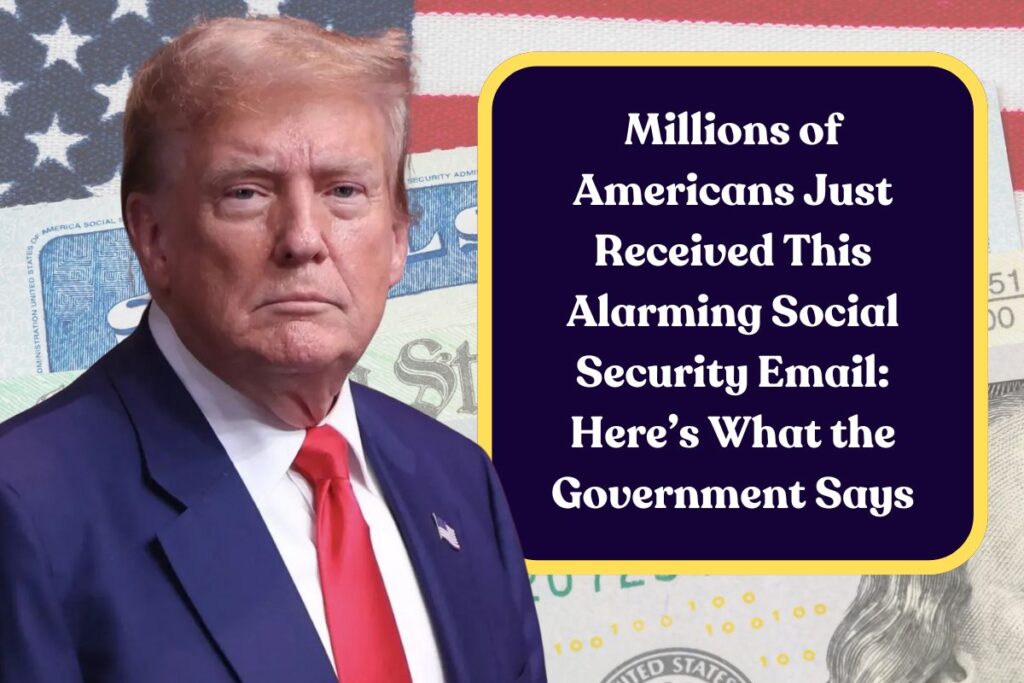Fake emails claiming to offer additional security features are part of a latest email scam that targets Social Security beneficiaries. Those who receive the emails are urged to download a “security update” that is actually malware. You must not click on links or download files via spam emails as it will hack your device.

You should also confirm any communication with the Social Security Administration by calling their official number or visiting their website. Any suspicious emails should be reported to the OIG) of the Social Security Administration as he/she will help you in this matter.
SSA phishing scam targets retirees
The methods used by hackers to defraud Americans of their money are getting more creative. A phishing scam that is becoming more popular that targets online private data and sends emails and texts claiming to link the victim’s Social Security number to serious criminal activity like financial fraud or drug trafficking, or less serious ones like avoiding traffic tickets. Most often, scammers posing as government law enforcement officials target Social Security.

The receiver is then instructed by the fake email sender to click on a link in the email to obtain further details. A user’s computer or phone becomes infected with data-retrieving malware after clicking on it, that scammers may use to steal personal information including Social Security numbers, bank account details, and credit card information.
What is the Social Security Scam?
This social security scams involves informing recipients that their Social Security statement is available using phishing emails that impersonate genuine SSA communication. The emails, which state that the file is only compatible with Windows computers, urge recipients to download an attachment and follow directions.

The file that is provided is really a disguised remote access program called Screen Connect. Once installed, it gives hackers total command over the victim’s device. Without the user’s awareness, the hacker can read, move, and change files; install malicious software; and steal confidential data.

Social Security receivers are the subject of a new phishing attempt which asks them to download fake Social Security statements by sending them emails that appear to be from the Social Security Administration (SSA).

Bank account passwords and other private information are among the sensitive data that hackers might obtain through these malicious downloads. Emails asking for statement downloads should be avoided, and the sender’s address should be confirmed, in order to safeguard one’s Social Security account.
How the Scam Works?
Phishing emails and texts are among the serious dangers to cybersecurity. The Social Security Administration phishing scam is among the most common and harmful examples, since it uses frightening and misleading communications to trick unwary people. Phishing emails were the initial step in even the largest financial thefts and data breaches in history.

Impersonation and urgency are the two main reasons they work so well. It’s common to come across phishing emails or texts that urge you to act quickly. They create a sense of urgency to frighten you into clicking the link, which might infect your device with malware. In order to create this sense of urgency, scammers pose as official organizations and scare you with things like unpaid taxes, fines for moving violations, and more.
How to recognize a phishing attempt?
A research published by NCOA states that scammers often target senior citizens as scammers believe that seniors are wealthier than other population. Americans 60 and older reported a total fraud loss of $3.4 billion in 2023, making them more vulnerable to online scams When cybercrimes like this phishing scam are becoming more common, it is important that you carefully go through any official communication channels. Making ensuring your device has antivirus software installed as it will identify malware before it infect your device.
In the specific case of this SSA phishing scam, receivers should also be aware that the SSA does not immediately suspend SSNs for a single incident, nor will a respectable organization send out unprotected emails. The SSA advises those who fall prey to this fraud to stop communicating with the scammers, report the matter to the SSA OIG, and file a police complaint.
Common Social Security scam tactics
- Threatening phone calls: Scammers often pose as SSA staff members and threaten to arrest you or take legal action if you fail to share your SSN or other personal information.
- Phishing and fake emails: You could get emails that look like they’re from the SSA, but they might have attachments that look like official letters or links to phony websites that are meant to steal your personal data.
- Fraudulent SMS: Scammers pose as Social Security representatives and ask you to call an un-known number.
- Misleading mailings: Although less often, scams that pose as the Social Security Administration (SSA) sometimes send letters requesting that you phone a toll-free number to activate benefits or adjustments.
What to do if you receive a suspicious call or Text?
- End the call immediately: Avoid interacting with the scammers and disconnect the call immediately.
- Don’t share any private information. This includes your private details, such as your bank account information or SSN.
- Note the specifics: Make a note of the caller’s phone number, time, and any other details they may have given.
- Report the fraud: You can make a report online at the Social Security Administration’s website or call the Office of the Inspector General (OIG) at 1-800-269-0271. The Federal Trade Commission can also be contacted at ReportFraud.ftc.gov.
| Official Website | Click Here |
| Homepage | BlackSea-Commission.org |






